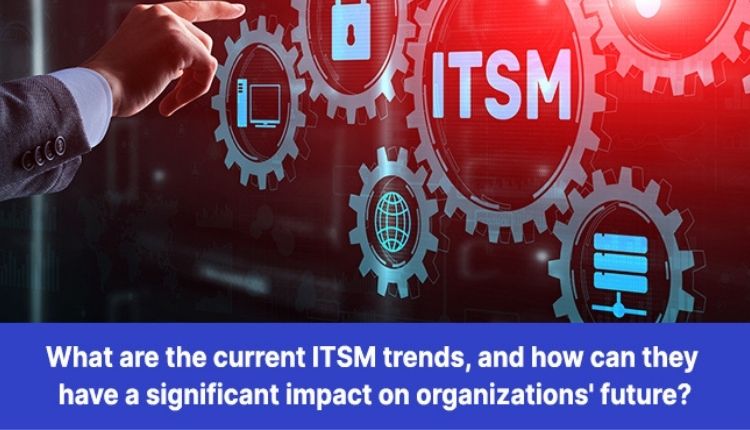ITSM (IT Service Management) is everything that surrounds the lifecycle of IT services.
IT is a broad term to define the technology we use in our organizations. ITSM ensures that this technology functions seamlessly across its lifecycle, from design and development to deployment and management.
The people, processes, and tools that manage IT services for an organization define the whole concept of ITSM. It’s way beyond IT support and caters to the holistic needs of an organization’s customers and supports its overall mission.
Future of ITSM and its impact
The global ITSM market is forecasted to reach $9164.8 million by the year 2027. It will employ a proactive and predictive approach toward IT support. AI and workflow automation will be the two pillars of ITSM that will drive improved customer experience and productivity. Moreover, since ITSM will be more predictive, network performance monitoring is another trend for 2022 and beyond.
Besides, the evolution of ITSM in the future will significantly impact how IT services help people and look after them in the long run.
Top 6 Trends in ITSM
Here’s what the trending ITSM looks like.
1. Digital transformation expansion
The pandemic has led to an increase in support cases, primarily due to remote work. As a result, the workforce needed extended IT support to understand and better utilize the tools and technology requirements for remote work.
As a result, organizations are more inclined toward expanding their digital assets. More than half of ITSM leaders have identified the need for digital transformation and are investing more in technology.
2. ITSM for improved collaboration
ITSM will focus more on collaboration as it is the essence of IT support. It is not about making processes work together, but it highlights the importance of people working together to achieve a common goal: customer satisfaction. A modern IT service management tool gives a platform for visual collaboration like Kanban boards.
3. AI-enabled ITSM solutions for smart automation
We will witness streamlined IT support due to AI and automation in the coming years. As the number of tickets increased during the pandemic, employee satisfaction declined concerning IT support. Therefore, AI-enabled automation has become the most significant ITSM trend of 2022 and will continue to dominate beyond. It allows organizations to employ automated incident response, chatbots, and business process optimization based on AI and ML.
4. Agile ITSM system
Many organizations have already implemented agile methodologies as a benchmark to improve IT support and keep things going during unforeseen situations. Almost half of the organizations surveyed agreed to continue using agile working methods. To employ operational agility, organizations must make ITSM and digital technologies available to all the teams in an organization.
5. Enterprise service management
Enterprise service management (ESM) involves implementing the best ITSM practices into the entire organization to get a bird’s-eye view of their processes, resources and customer demands. Sensing the apparent benefits of ESM, organizations cannot afford to delay its implementation in 2022.
6. Hyperautomation
The concept of hyperautomation came into the bigger picture during the pandemic. It is all about managing the IT services by going the extra mile with quality of work, business processes, and decision-making. With many service desk tickets being handled by automated responses, hyperautomation is yet another roadmap for 2022. As a result of this automation, IT teams are free to scrutinize critical tickets and improve the efficiency of IT services.
The bottom line
The future of ITSM is going to be extraordinary. Innovation is never-ending, and so are the possibilities for ITSM. While most organizations are validating the trends, many are to witness its benefits. Have you implemented these ITSM trends in your IT support framework?












